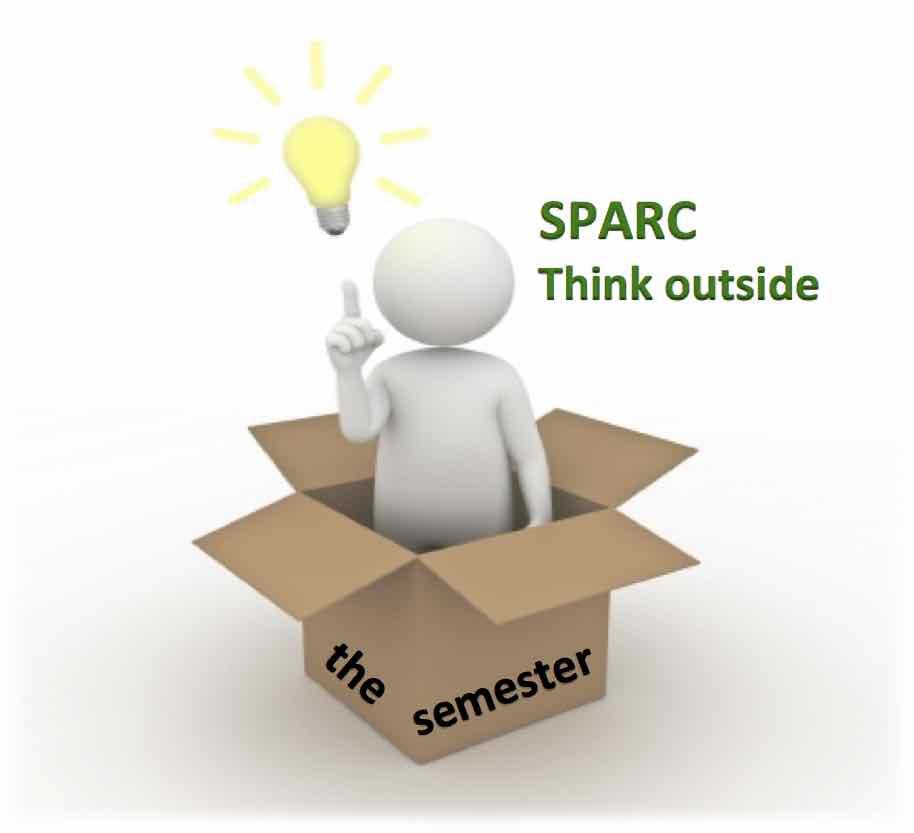 |
Peer Computing Expert Training Materials
PCE
|
 |
Agenda
- Overview of SPARC and Goals [15 minutes]
- Overview of UTA responsibilities [20 minutes]
- Learning theory [30 minutes]
- Peer mentor role and effective feedback [30 minutes]
- How to create a climate of diversity and inclusion [30 minutes]
- Active learning [20 minutes]
- Mentoring yellow sashes [20 minutes]
- Reflection and wrapup [15 minutes]
- Demonstration project [After training session]
1. Overview of SPARC and Goals [15 minutes]
Discussion slides
2. Overview of UTA responsibilities [20 minutes]
- Introductions
Have each student give name, graduation year, and answer a question:
“What is one thing nobody here knows about you?”
- What does a UTA do?
Discussion—each student should contribute something.
- What benefits do peer mentors offer?
Discussion prompts:
- Have you had a peer mentor? What was positive or negative about that experience?
- Have you ever been a peer mentor? What made you successful or unsuccessful?
- What qualities should a peer mentor have?
- What might make peer mentoring difficult? Does it depend on the mentor? The mentee? The environment?
- Name one helpful and one not-helpful thing that a peer mentor can do
- Anonymous feedback?
3. Learning theory [30 minutes]
Terms:
- Self-Efficacy:
One’s perception of capability,
and in particular the capability to navigate through challenging material and persist in spite of difficulty
- Self-Regulation:
Self-regulated learning uses a feedback cycle where learners
(1) observes their learning,
(1) try new strategies,
(1) then judge whether the strategies worked
- Growth Mindset:
A belief that one’s intelligence or ability can change
Discussion slides
4. Peer mentor role and effective feedback [30 minutes]
Discussion slides
5. How to create a climate of diversity and inclusion [30 minutes]
Climate: Reputation and “norms” of an organization or department
The climate in many STEM-related disciplines is considered chilly or hostile for
many women, people of color, and udnerrepresented minorities
Teachers, GTAs, and UTAs can help promote a climate of inclusion—by
being open, inviting, and encouraging.
Microaggression:
A subtle but offensive comment or action directed at a minority or other nondominant group
that is often unintentional or unconsciously reinforces a stereotype.
A microagreesion video:
Mosquito bites
Another microagreesion video:
White people microaggressions
Judgements:
We judge ourselves based on our intentions,
we judge others based on their actions.
Assumptions Exercise
Read the following descriptions of students,
pick one,
and right down all assumptions that come to your mind
about the student.
THIS IS PRIVATE AND WILL NOT BE SHARED!
Be honest to yourself.
- Student A:
-
When you first meet with the student,
the student expresses anxieties about taking Computer Science classes
and is clearly concerned about taking classes that are too hard.
The student mentions
being an Art History major and has no experience with programming.
- Student B:
-
When you first meet her,
she starts telling you about some of her favorite programming projects in high school.
She makes a point of dropping a few technical terms
and expressing enthusiasm about studying Computer Science.
- Student C:
-
When you first meet her, she is effusive and scattered.
She tells you that she is an older student
and that she hasn’t taken a Math class in over 30 years.
She says her kids have convinced her that she needs to get more familiar with computers.
She doesn’t seem at all anxious about the class.
Another microagreesion video:
Encouraging diversity
Group Discussion
What are some specific things that a UTA can do
to promote a more inclusive atmosphere?
What are some specific things that a UTA can do
to promote a less inclusive atmosphere?
6. Active learning [20 minutes]
- Benefits of active learning
- Types of active learning
Why is active learning successful?
Discussion slides
7. Mentoring yellow sashes [20 minutes]
Group Discussion
- What do you know now that you wish you’d known when you started working in
a SPARC class?
- What mistakes have you made, or seen other yellow sashes make?
- Is it better to acknowledge the differences (skin, religion, gender, ...),
or ignore them?
- Do you have to be prejudiced to say or do something that’s prejudiced?
8. Reflection and wrapup [15 minutes]
- Questions?
- Feedback?
- Anything else you want to discuss?
9. Demonstration project [after training session]
Create a one-minute video discussing a concept that you learned during the day.
You can make it with any recording device and in any style you want.
Talking into your mobile phone is fine,
but we are hoping to get some awesome entertaining and informative artistic videos.
Really good videos will be used in future training sessions
(with your permission, of course).









